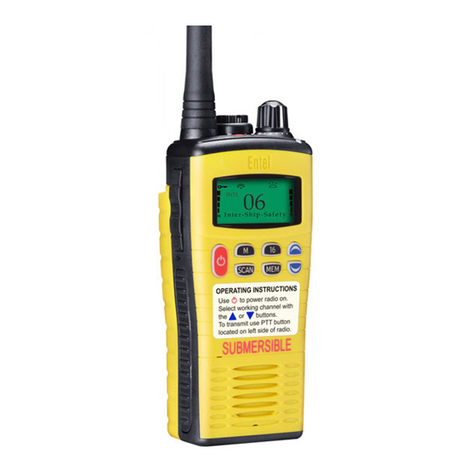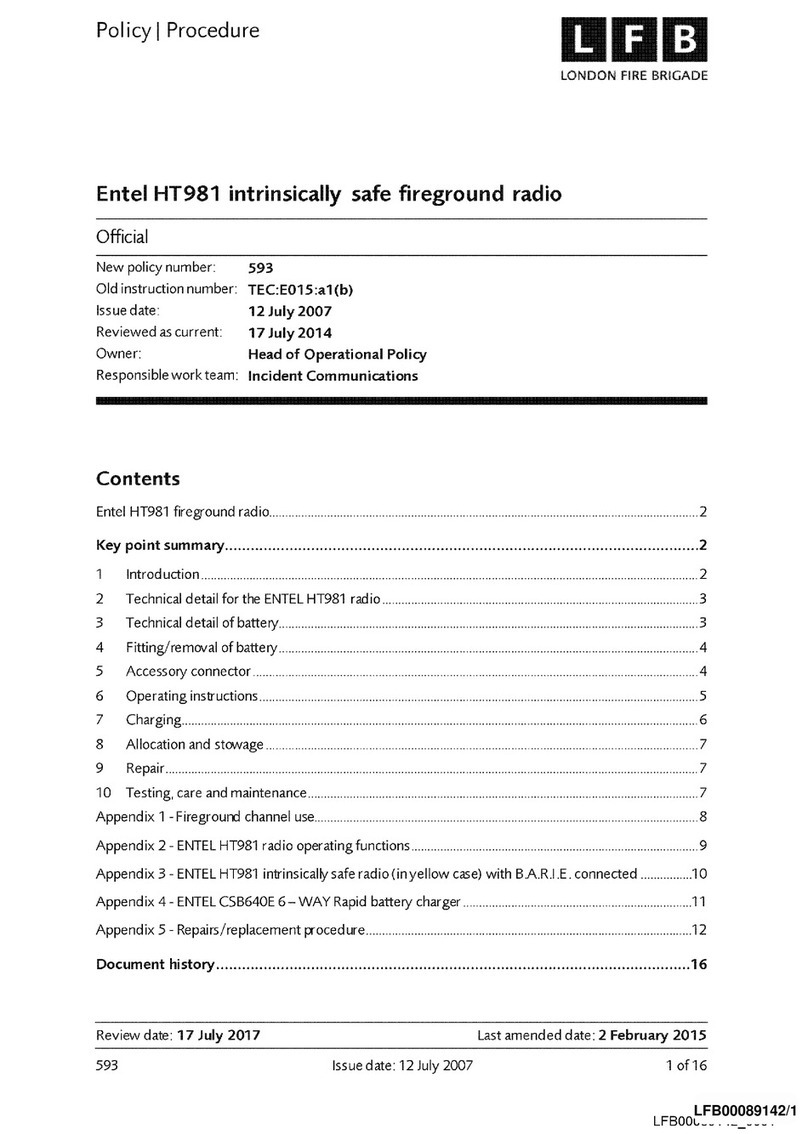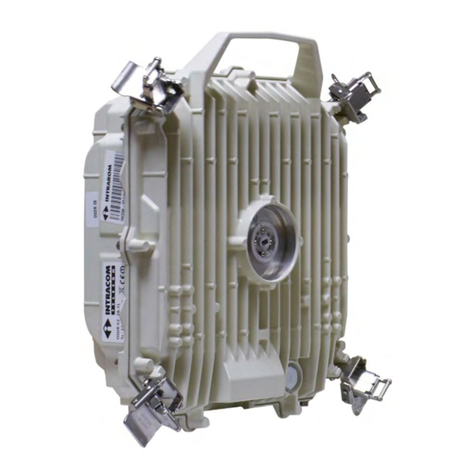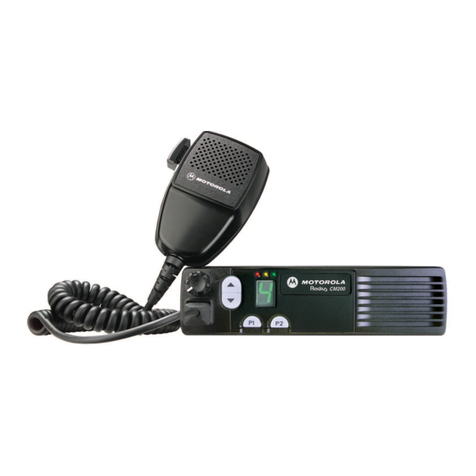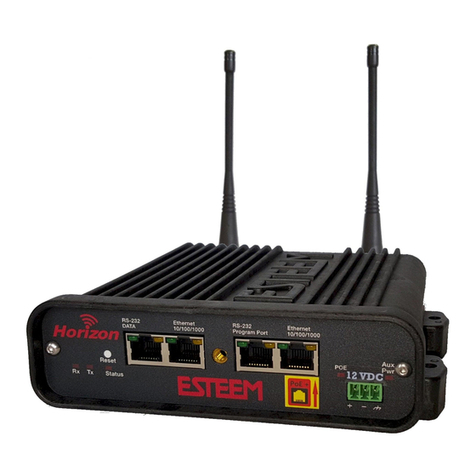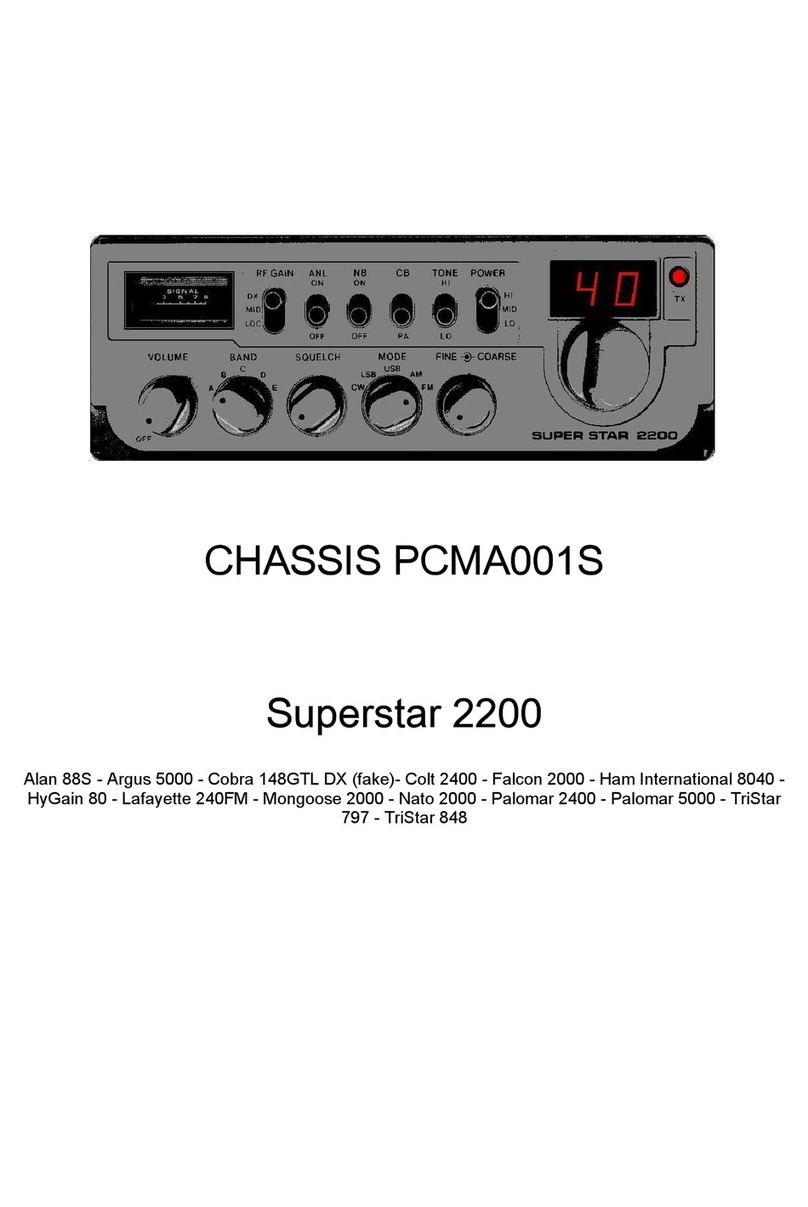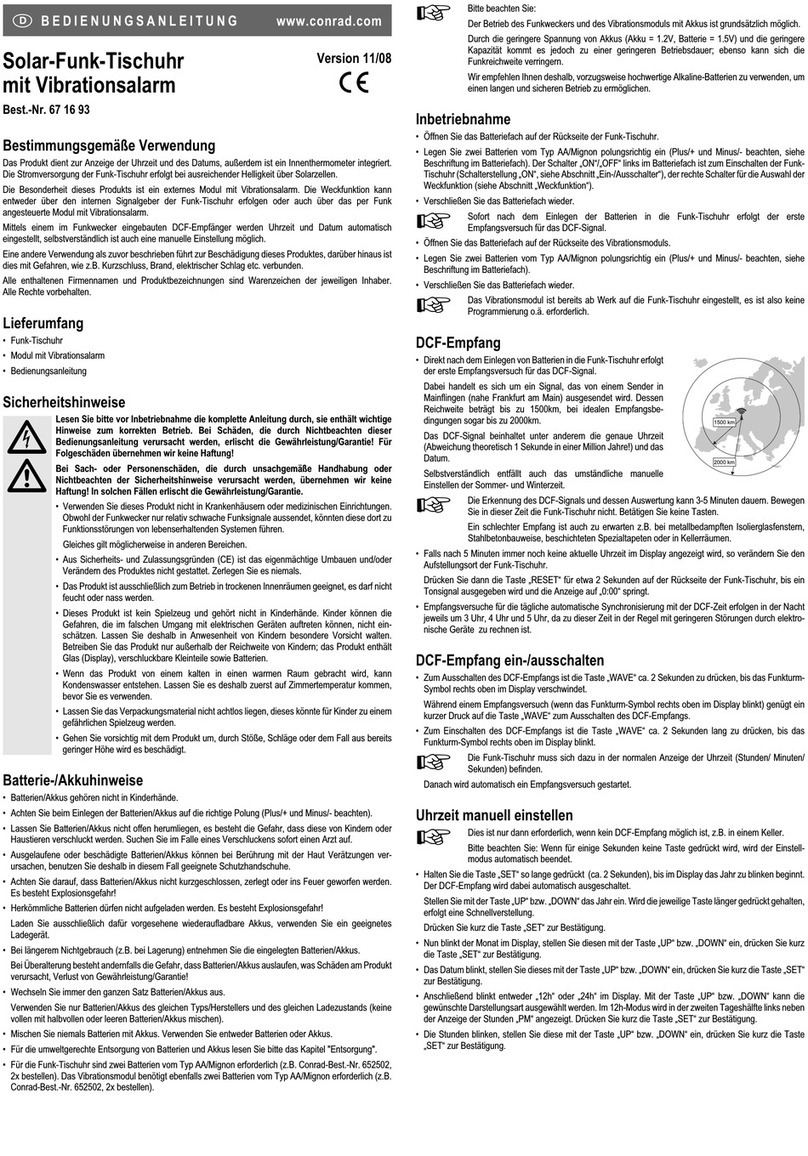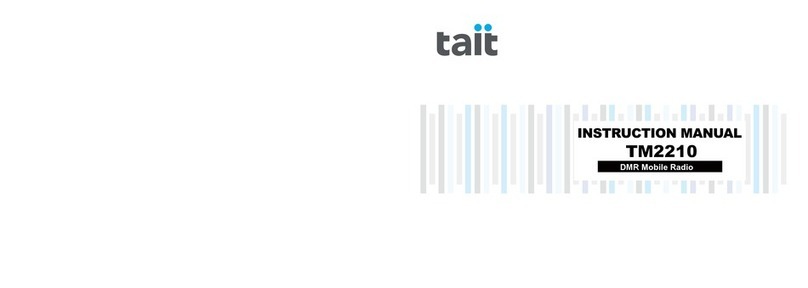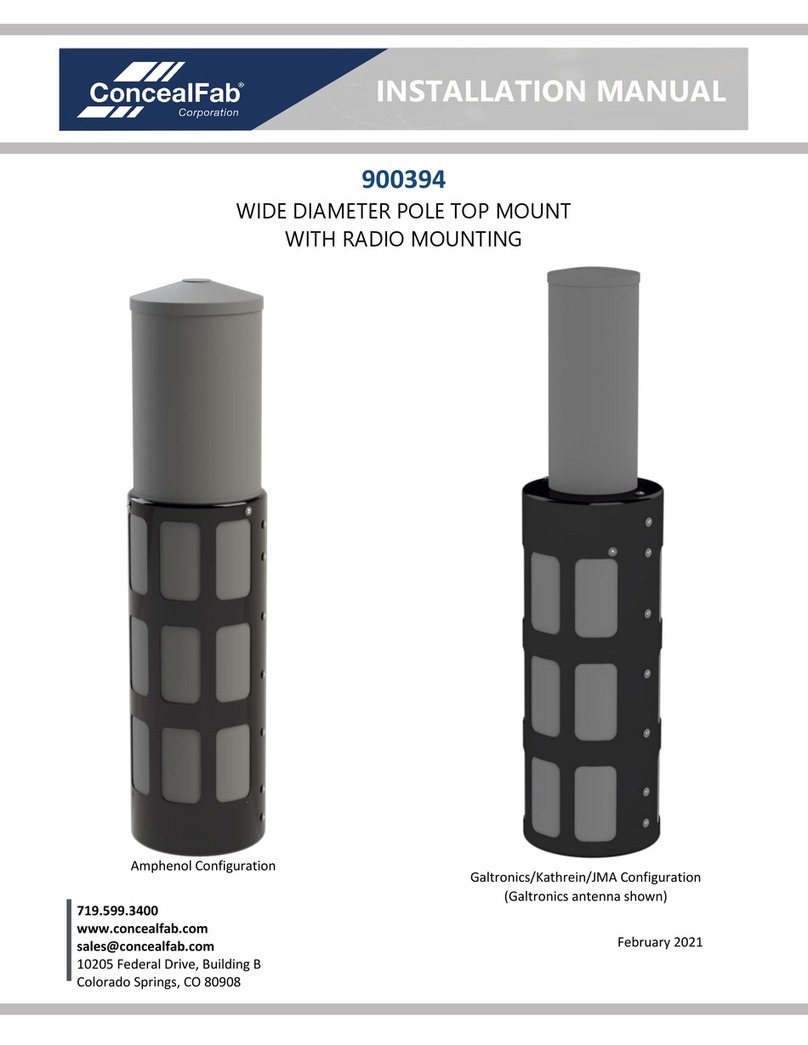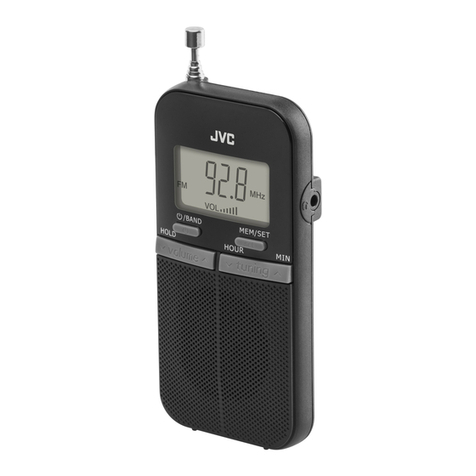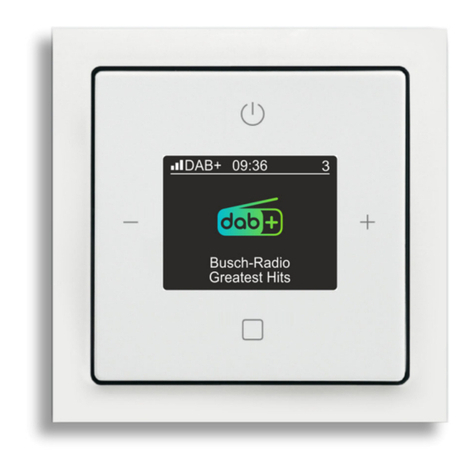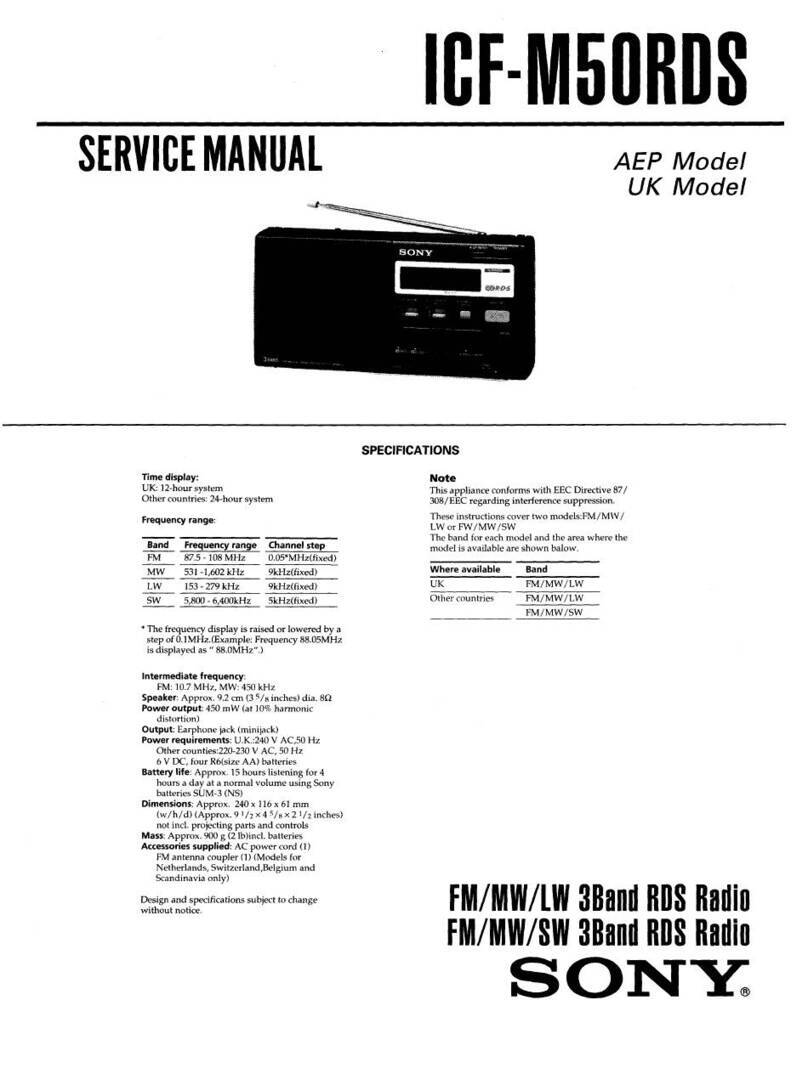Entel HT981 Installation guide

Policyl
Procedure
LONDON
FIRE
BRIGADE
Entel
HT981
fireground
radio
and
savox
interface
equipment
(BARIE)-training
note
Official
New
policy
number:
516
Old
instruction
number:
TRN:EO15:a1
Issue
date:
12
July
2007
Reviewed
as
current:
22
November
2016
Owner:
Head
of
Operational
Policy
Responsible
work
team:
Incident
Communications
Contents
1
Aims
.......................................................................................................................................................................
2
2
Objectives
.............................................................................................................................................................
2
3
Introduction
..........................................................................................................................................................
2
4
The
entel
HT981
intrinsically
safe
fireground
radio
......................................................................................
5
Description
of
entel
HT981
intrinsically
safe
radio
.......................................................................................
:3
6
The
savox
interface
equipment
connected
toentel
HT981
in
yellow
case
..............................................
6
7
Fitting
B.A.R.I.E.
to
a
breathing
apparatus
set
...............................................................................................
6
8
Operational
use
..................................................................................................................................................
12
9
Channels
..............................................................................................................................................................
12
10
Battery
fitting,
removal
and
charging
............................................................................................................
13
11
Cleaning,
testing
and
recording
.....................................................................................................................
14
12
Testing
.................................................................................................................................................................
14
Document
history
..............................................................................................................................
16
Review
date:
22
November
2019
516
Issue
date:
12
July
2007
Last
amended
date:
1
of
16
LFBO0105450
0001
LFB00105450/1

1
1.2
2
3
3.2
3.3
3.4
3.5
Aims
To
introduce
and
familiarise
SDBA
and
EDBAwearerswith
the
Entel
HT981
intrinsically
safe
rad
io
and
Savox
interface
eq
uipment
(B.A.R.I.E).
Memorandum
to
all
users
of
this
policy
Before
read
ingthis
policy
all
personnel
are
asked
to
ram
iliarise
them
selves
with
the
contents
of
the
following
policies:
¯
Policy
Number
593
-
Entel
HT981
Intrinsically
Safe
Fireground
Radio.
¯
Policy
Num
ber
592
-
Breathing
Apparatus
Rad
io
Interface
Eq
uipm
ent
(B_A_RI
E)_
Objectives
By
using
this
policy
you
will
be
able
to:
¯
Identify
the
Entel
rad
io
and
Savox
interface
eq
uipment
(B.AR.I.E.)
and
where
it
is
allocated.
¯
Fitthe
radioand
B.A.R.I.E.
to
an
SDBA
and
EDBAset.
¯
Operatethe
B.A.R.I.E.
¯
Remove
and
fit
a
battery
to
the
radio
and
charge
spare
batteries.
¯
Be
ram
iliar
with
the
testing
of
the
Entel
rad
io
and
Savox
interface
eq
uipm
ent
(B.A.R.I.E).
Introduction
The
Entel
HT981
is
an
intrinsically
safe
rad
io
that
replaces
the
Motorola
G
P900
and
Niros
TRX1012
currently
carried
on
PumpingAppliances
and
Fire
Rescue
Units
(FRU).These
appliances
will
now
carry
two
sets
of
B.A.R.I.E.
per
appliance.
The
radio
and
B.A.R.I.E.
conform
to
all
current
requirementsofthe
European
ATEX
Directive.
Eq
uipment
and
Protective
Systems
intended
for
use
in
Potentially
Explosive
Atmospheres
(ATEX).
The
radio
is
fully
splash
proof
and
SUBMERSIBLE,
exceedingall
aspects
of
the
European
ATEX
Directive.
(Please
note
that
this
is
a
quality
of
the
radio
in
its
manufacture
and
not
an
intended
use
when
connected
to
a
B.AR.I.E).
Safety
precautions
Never
attempt
to
remove
a
battery
in
a
flammable
or
explosive
atmosphere.
If
dedicated
B.A.R.I.E.
sets
are
not
available
a
minimum
ofa
handheld
radio
must
be
carried.
Ente1480/1
personal
issue
handheld
radios
are
not
intrinsically
safe
(IS),
and
m
ust
not
be
used
in
flammable
or
explosive
atmospheresand
should
only
be
used
where
BARIE
sets
are
unavailable,
and
only
after
a
risk
assessment
has
been
undertaken.
(Please
refer
to
Policy
Number
4.58
-
Entel
HX-480/1
Hand
held
Incident
ground
radio
for
further
information).
516
Issue
date:
12
July
2007
2of16
LFBO0105450
0002
LFB00105450/2

4
The
entel
HT981
intrinsically
safe
fireground
radio
Aerial
MON
button
(disabled)
Press
to
Talk
(P-I-F)
Radio
Lock
’TICK’
On/Off
Button
NB:
This
is
a
quality
of
the
radioin
its
manufacture
and
not
an
intended
use
when
connected
to
a
B.A.R.I.E
LCD
Display
Screen
Volume
Control
LED
for
Transmitting
(red)
and
Receiving
(green)
Channel
Up/Down
Please
note
that
the
M
(Menu),
P1,
P2,
Orange,
and
MON
buttons
are
currently
disabled.
5
Description
of
entel
HT981
intrinsically
safe
radio
The
Entel
HT981
is
an
intrinsically
safe
radiothat
uses
the
same
channels
as,
and
is
fully
interoperable
with,
existing
incident
ground
radios.
It
is
permanently
attached
to
SDBA
and
EDBA
sets
and
is
retained
in
a
yellow
case.
The
display
screen
shows
516
Issue
date:
12
July
2007
3
of
16
LFBO0105450
0003
LFB00105450/3

H
Power
Indicator
High
.............
~,s
the
power
of
the
channel.
All
channels
are
high
power.
Key
Lock
The
radio
can
be
key
locked
in
order
to
prevent
accidental
alteration
of
channel.
l~r~
Key
Tone
Indicator
This
indicates
that
the
key
tone
beep
is
on;
this
is
programmed
on
all
radios
to
give
positive
ind
ication
of
changing
channels.
Battery
Strength
A
solid
block
indicates
the
battery
is
charged
and
ready
for
use,
when
the
level
indicates
2/3rds
full
the
battery
should
be
changed.
CH6
Channel
Number
This
indicates
the
LFB
radio
channel
in
use.
[~]Volume
Control
This
is
shown
on
a
grad
uated
bar
indicating
1-
16
levels
ofvolume
when
the
dial
is
turned.
Belowthe
display
screen
is
the
red
power
on/off
button
and
the
channel
selection
up/down
buttons.
The
radio
has
a
range
of
other
specific
functions
which
are
not
required
for
fire
service
use.The
controls
for
additional
functions
have
been
disabled
on
the
radios.
The
operation
of
unused
function
controls
buttons
will
cause
the
radioto
bleep
and
the
LCD
screen
to
illuminate,
but
will
not
otherwise
affect
the
performance
of
the
radio.
Those
disabled
are
the
M
(menu),
P1,
P2,
Orange,
’X’
and
MON
buttons.
516
Issue
date:
12
July
2007
4of16
LFB00105450
0004
LFB00105450/4

5.2
The
following
controls
and
connections
are
located
on
top
of
the
rad
io
(left
to
right);
¯
Aerial
¯
Orange
button
(disabled)
¯
12pin
accessory
connector
(for
interface
equipment)
¯
Volume
control
¯
LED
indicator
(red
fortransmitting,
green
for
receiving).
5.3
The
battery
is
attached
tothe
radioviaa
finger
tight
locking
screw.
Locking
Screw
5.4
Allocation;
The
Entel
HT981
is
for
usewiththe
SDBAand
EDBAsets:
¯
PL-
2
Radios
(permanently
connected
to
B.A.R.I.E.)
Two
batteries
per
radio.
¯
P
-
2
Radios
(permanently
connected
to
B.A.R.I.E.)
Two
batteries
per
radio.
¯
FRU
-
2
Radios
(permanently
connected
to
B.A.R.I.E.)
Two
batteries
per
radio.
All
spare
batteries
are
to
be
kept
fully
charged.
516
Issue
date:
12
July
2007
5
of
16
LFB00105450
0005
LFB00105450/5

6
The
savox
interface
equipment
connected
to
entel
HT981
in
yellow
case
Bone
Microphone
,,
Press
To
Talk
(PTT)
Description
of
the
Savox
interface
equipment
6.1
The
Interface
eq
uipment
consists
ofthe
following
items
manufactured
by
Savox:
¯
Savox
400DL
Press
totalk
switch
(P-I-I-).
¯
Savox
HC-1
#A
Bone
Conduction
Microphone
and
Ear
speaker.
5.2
When
connected
together
the
radio
and
interface
eq
uipment
have
been
certified
to
the
same
standard
of
intrinsic
safety
as
the
radio.
5.3
The
radio
and
components
of
the
interface
equipment
are
not
interchangeable
with
any
other
interface
and
radio
equipment.
Note:
Under
no
circumstances
are
personnel
to
attempt
to
remove
the
B.A.R.I.E.
from
the
radio
in
order
to
use
the
radio
for
general
fireground
corn
munications
or
attach
a
non-IS
radio
to
the
BA
set.
The
rad
io,
B.A.R.I.E
and
protective
case
are
to
be
treated
as
a
com
plete
unit.
5.4
The
microphone
consists
of
a
bone
cond
uction
microphone
that
is
attached
to
the
top
facemask
strap
and
sits
on
top
of
the
head.
The
ear
speaker
consists
of
a
speaker
fitted
to
a
detachable
arm
with
flexible
fixingstrap.
The
arm
is
fitted
to
the
upper
facemask
strap
attachment
point,
and
can
be
placed
on
either
left
or
right
side
for
personal
user
preference.
7
Fitting
B.A.R.I.E.
to
a
breathing
apparatus
set
Important
fact:
The
B.A.R.I.E
is
fitted
to
an
SDBA
or
EDBA
set
in
the
same
way
(minor
differences,
where
applicable,
are
highlighted
in
the
fitting
proced
ure).
516
Issue
date:
12
July
2007
6of16
LFB00105450
0006
LFB00105450/6

7.1
The
radio,
contained
within
its
cover,
is
fastened
onto
the
left
hand
waist
belt
by
clipping
the
security
strap
through
the
loop
on
the
waist
belt
between
the
"D"
ri
ng
and
release
buckle,
as
shown
in
picture
1.
Picture
I
7.2
Wearers
are
reminded
to
recheck
the
comm
unication
cables
for
tightness/looseness
in
the
event
that
the
back
plate
on
the
set
is
adjusted.
Note:
The
cable
fitted
with
the
12
pin
intrinsically
safe
adaptor
and
P-I-I-
is
already
connected
to
the
fireground
radio
by
RadioWorkshops.
Note:
Tampering/disconnecting
of
this
adaptor
would
render
the
equipment
non-intrinsically
safe
and
the
equipment
isthen
"Offthe
Run".
7.3
The
PTTis
passed
throughthe
moulded
handle
onthe
left
side
ofthe
back
plate,
three
times,as
shown
in
picture
2.
The
auxiliary
air
hose
m
ust
be
released
from
its
clip
prior
to
passingthe
P-I-I-
and
cable
through
the
handle
from
the
inner
side
of
the
backplate
to
the
outer
side.
Once
complete
the
auxiliary
air
hose
can
be
replaced
in
its
securingclip.
(Note!
the
BA
cylinder
is
attached
to
the
outer
side
of
the
backplate).
Moulded
Backplate
Handle
The
P~-r
and
Cable
are
passed
through
the
handle
3
times
Picture
2
516
Issue
date:
12
July
2007
7of16
LFBO0105450
0007
LFB00105450/7

7.4
The
cable
then
runs
up
the
back
plate,
past
the
cylinder
retaining
strap
and
then
crosses
the
backplate
allowingthe
backplate
to
be
extended
and
retracted
whilst
the
BARIE
is
fitted.The
cable
then
runs
over
the
right
hand
shoulder
strap,
as
shown
in
picture
:3.
Cable
running
up
left
hand
side
and
crossing
the
back
"z--.~ll
hand
shoulder
strap.
7.5
Picture
3
Note:
Care
m
ust
be
taken
not
to
pinch
or
strain
any
cable
when
the
back
plate
is
extended.
The
cable
passes
overthe
right
shoulder
strap
and
is
secured
in
place
under
the
protective
silver
flap
pictures
3
and
4.
7.6
The
integral
rotating
clip
on
the
PTT
is
attached
to
the
loop
ofthe
RIGHT
side
shoulder
strap
between
the
"D"
ring
and
adjustment
buckle,
as
shown
in
picture
4;
this
position
will
allow
easy
operation
by
hand.
7.7
The
PTT
must
also
be
positioned
sothat
the
quick
release
plugconnection
faces
downwards.
The
remaining
loop
of
cable
placed
behind
the
PTT
is
held
in
place
by
the
PTT
clip,
as
shown
in
p
i
ctu
re
4.
Cable
exits
silver
protective
fl
ap
PTT
clip
attached
to
harness
with
the
cable
looped
back
and
held
in
place
with
PTT
clip.
Quick
release
plug
connection
faci
ng
down
Picture
4
516
Issue
date:
12
July
2007
8of16
LFBO0105450
0008
LFB00105450/8

7.8
7_9
The
Bone
Conduction
Microphone
(BCM)
is
attached
tothe
face
mask
by
means
ofa
Velcro
attachment.
The
top
strap
of
the
BA
mask
is
left
in
place
and
the
Velcro
attachment
is
fitted
around
either
the
top
strap
or
top
lug
depending
on
user
preference.
(a)
Open
the
Velcro
attachment
and
place
the
BCM
through
the
punched
hole
sothat
the
Velcro
side
of
the
BCM
is
uppermost
(pictures
5
and
6).
Picture
5
Picture
6
(b)
The
BCM
and
Velcro
attachment
can
be
placed
either
round
the
top
strap
or
front
lug
with
the
BCM
facing
downwards.
The
two
faces
of
the
Velcro
attachment
can
then
be
pressed
closed
securingthe
BCM
assembly
tothe
face
mask
spider
(Pictures
7
and
8).
Picture
7
Picture
8
516
Issue
date:
12
July
2007
9of16
LFB00105450
0009
LFB00105450/9

7.10
The
Ear
Speaker
(ES)
is
then
attached
to
the
facemask;
7.11
7.12
Please
note
that
the
ES
can
be
fitted
to
either
the
left
or
right
side
of
the
face
mask
(for
personal
preference)
and
fitting
instructions
are
identical
Ensure
that
all
cables
from
the
BCM
are
on
the
outside
of
the
facemask
straps
and
thatthe
speaker,
in
its
holder,
is
facing
inwards
towards
the
facemask,
as
shown
in
picture
10.
Graspthe
upper
of
the
two
side
straps
and
find
the
square
edged
mouldingthat
is
part
of
the
facemask
(highlighted
in
pictures
9}.
Make
a
loop
with
the
adjustable
strapofthe
ES
arm,
usingthe
sixth
slit
and
pass
it
over
the
square
edge
moulding,
as
shown
in
picture
9
(NB;
the
First
slit
is
the
one
nearestthe
speaker)_
Pull
the
square
edge
so
that
the
ES
arm
sits
tight
up
against
the
facemask
strap
stud
fastening,
whilst
maintainingthumb
pressure
on
the
loop
pull
the
flexible
straptight.
Pass
the
strap
back
through
the
seventh
slit
and
pull
tight
again,
as
shown
in
picture
9.
Maintaining
pressure
on
the
loop
ensures
security
of
the
fixingwhilst
it
is
locked
offby
passingthe
flexible
strap
through
the
seventh
slit.
5th
and
7th
slits
on
Ear
Speaker
arm
Square
edge
mouldingon
face
mask
Picture
9
Picture
10
516
Issue
date:
12
July
2007
10of16
LFBO0105450
0010
LFB00105450/10

7.13
The
quick
release
plug
will
be
disconnected
when
the
set
is
stowed
on
the
appliance.
The
connection
will
only
be
made
when
it
is
necessary
to
test
the
B.A.R.I.E.
and
when
the
BA
set
is
donned
and
started.
When
wearing
B.A.R.I.E.
with
fire
hoods,
donthe
hood,
passingthe
face
hole
over
the
head
so
that
it
sits
around
the
wearer’s
neck.
Don
the
face
mask
in
the
normal
manner
ensuringthe
bone
conduction
microphone
locates
onto
the
head
in
a
comfortable
position.
Pass
the
cable
and
quick
release
plugfrom
the
speaker
down
through
the
face
hole
and
out
through
the
neck
hole
as
shown
in
picture
11.
The
plug
will
then
hang
from
the
top
of
the
fire
coat
zip.
The
cable
is
then
hidden
behind
velcro
fasteningof
the
fire
coat
leaving
sufficient
cable
protrudingand
enabling
connection
to
be
made
with
the
PTT,
as
shown
in
pictures
12
and
13.
When
the
hood
is
pulled
back
over
the
head
and
the
fire
tunic
collar
fastened
(above
the
protrud
ing
cable),
the
hood
will
provide
an
effective
and
continuous
seal
around
the
face
mask
and
between
the
face
mask
and
the
tunic
collar
as
shown
in
picture
14.
Picture
11
Picture
12
Ear
Speaker
and
BCM]
qidden
undertheflash
I
mood
J
Picture
13
Picture
14
516
Issue
date:
12
July
2007
11
of
16
LFB00105450
0011
LFB00105450/11

8
Operational
use
The
procedures
below
areto
be
undertaken
at
’A
and
B’
tests
and
don
and
start
Prior
to
rigging
in
BA
it
is
recommended
that
B.A.R.I.E.
wearers
turn
the
radio
on
and
key
lock
it
to
the
appropriate
channel.
To
turn
on
the
radio
press
the
power
switch,the
radiowill
bleep
to
indicate
a
selftest,
’London
Fire’
and
the
radio
serial
num
her
will
appear
in
the
LCD
screen.
The
radio
will
then
default
to
the
last
channel
selected
and
displaythis
onthe
LCD
screen.
8.2
Channel
6
must
be
selected
by
the
wearer
for
BA
communications,
or
Channel
5
or8
ifbase
station
and
leaky
feeder
equipment
are
installed_
To
prevent
accidental
changing
ofthe
channels
the
radio
has
been
provided
with
a
key
lock
facility.
The
appropriate
channel
is
key
locked
by
pressingand
holdingthe
TICK
button
for
3
seconds,
and
a
padlock
symbolwill
appear
in
the
LCD
screen.
When
in
lock
mode
the
radio
cannot
be
accidentally
turned
off.
To
unlock
the
channel
press
and
hold
the
TICK
button
for
3
seconds,
the
radio
can
then
be
turned
off
by
press
ingthe
power
key.
8.4
Adjust
the
volumeto
a
comfortable
listening
level
by
rotatingthe
volume
knob.
Clockwise
will
increase
volume
and
anticlockwise
will
decreasevolume,the
volume
level
indicated
on
the
LED
screen
is
in
a
series
of
1
to
16
bars.
There
is
NO
limit
stop
on
the
rotating
switch.
8.5
Rig
in
BA
and
carry
out
d
on
and
start
proced
ure
8.6
To
talk
usingthe
Press
toTalk
(PTT);
connect
the
quick
release
plugintothe
Press
to
Talk
switch
then
press
the
PTT
with
your
hand.
8.7
Before
transmitting,
monitor
the
desired
channel
to
ensure
it
is
clear.
When
receivinga
signal,
wait
until
the
signal
stops
before
transmitting.The
radio
cannot
transmit
and
receive
sire
ultaneously.
Pressingthe
transm
it
switch
(PTT)
on
the
B.A.R.I.E.
begins
transm
ission,
to
confirm
transmission
the
LED
on
top
of
the
radio
will
illuminate
RED.
9
Channels
516
FIREGROUND
USE
CHANNEL
1
General
Incident
and
Command
2
Additional
Command
Channel
3
Used
under
direction
of
the
OIC/sector
commander
for
firefighter
communications
during
specific
tasks
4
To
be
used
only
under
direction
of
the
duty
radio
officer
5
Communications
(including
breathing
apparatus)
where
leaky
feeder
or
base
station
equipment
is
installed
6
Breathing
Apparatus
7
Police
Inter
Agency
(channel
69)
8
Police
Inter
Agency
(channel
70)/for
communications
in
specific
buildings
where
leaky
feeder
or
appropriate
base
station
equipment
is
installed
10
For
CU
use
11
Heathrow
Airport
Fire
Service
Channel
Channels
2,
5
and
8
are
duplex
and
will
only
work
in
conjunction
with
a
repeater
set
(available
when
a
CU
is
in
attendance,
and
fitted
to
specific
premises
-
e.g.,
LUL).
Police
interagency
channels
69
and
70
(H
H
radio
channels
7
and
8)
are
legacy
Police
frequencies
and
may
only
be
used
with
Ofcom
or
police
permission.
Issue
date:
12
July
2007
12of16
LFBO0105450
0012
LFB00105450/12

10
10.1
Battery
fitting,
removal
and
charging
Always
turn
the
radio
off
before
installing
or
removing
the
battery
To
fit
the
battery;
first
ensure
that
the
battery
connections
are
clean
and
that
the
battery
is
in
good
condition.
Offer
the
battery
up
to
the
rear
of
the
radio
and
ensure
the
tabs
at
the
base
of
the
battery
are
located
in
the
rear
lower
face
of
the
radio.
Press
the
battery
towards
the
rear
ofthe
radio
engaging
the
battery
locking
screw.
Rotate
the
locking
screw
clockwise
until
finger
tight.
Do
not
over-tighten
Rotating
locking
screw
10.2
Picture
15
To
remove
the
battery;
Turn
the
radio
off,
hold
the
radio
and
rotate
the
battery
Iockingscrew
anti-clockwise.
Ensure
you
do
not
hold
the
battery
pack
when
unscrewingthe
release
screw
as
the
radio
may
fall
to
the
floor.
Pull
the
battery
away
from
the
body
of
the
radio
and
lift
the
battery
away
from
the
radio.
10.3
Each
station
will
be
supplied
with
station
chargers.
10.4
10.5
10.6
Personnel
must
ensure
that
the
spare
batteries
are
fully
charged
at
all
times.
A
battery
should
be
charged
after
prolonged
use
or
if
following
routine
checks
the
battery
level
indicator
drops
belowtwo
thirds
full.
Place
the
spare
battery
in
the
charger,
when
inserted
the
LED
will
illuminate
red
to
indicate
the
charging
process
has
begun
and
will
change
to
green
when
the
charge
is
corn
plete.
Charging
time
for
a
fully
discharged
battery
will
take
upto
six
hours,
but
will
change
to
green
after
three
hours.
10.7
A
faulty
battery
will
cause
the
LED
to
flash
red.
516
Issue
date:
12
July
2007
13of16
LFBO0105450
0013
LFB00105450/13

Red
LED
indicating
battery
is
charging
Green
LED
indicating
battery
is
charged
10.8
11
11.1
11.2
12
Picture
16
Note:
Dueto
the
construction
of
the
battery
(Li
Ion)
it
does
not
require
a
monthly
discharge
process.
A
fully
charged
battery
will
have
a
workingduration
of
12-14
hours.
Cleaning,
testingand
recording
After
use
and
whenever
necessary,
the
B.A.R.I.E.
m
ust
be
cleaned
in
the
following
manner:
(a)
Carefully
rem
ove
the
bone
cond
uction
m
icrophone
from
its
hold
er
and
release
the
s
peaker
by
Iooseningthe
flexible
strap
on
the
detachable
arm.
Do
not
remove
the
microphone
by
pulling
on
the
cable.
(b)
Wipe
the
m
icrophone,
speaker
and
d
etachable
arm
with
a
Wipex
cloth.
Take
care
not
to
over
wet,
and
then
allow
d
rying
naturally.
Replace
when
corn
pleted.
(c)
Wipe
the
cables,
P~I-
and
radio
cover,takingcare
not
to
overwet,
and
then
allowto
dry.
(d)
Visually
inspect
all
cables
and
connections
for
any
change.
(e)
Reassemble
all
parts.
It
is
vitally
importantthat
B.A.R.I.E.
components
and
connected
radio
remain
together
in
their
unit,
as
issued
by
RadioWorkshops.
Testing
Frequency
¯
On
receipt
¯
Allocated
to
awearer
¯
Beforeand
after
use
¯
Annually
(by
Radio
Workshops).
On
receipt
and
when
allocated
to
a
wearer
¯
Inspect
fordamage.
516
Issue
date:
12
July
2007
14of16
LFB00105450
0014
LFB00105450/14

Attach
or
check
the
existingfitting
of
both
the
fireground
radio
and
the
B.AR.I.E.
to
the
allocated
BA
set.
Testthe
B.AR.I.E.
with
another
hand
held
radio.
Before
use
Testthe
BAR.I.E.
with
the
Communications
Operator.
After
use
¯
Clean
as
necessary
¯
Inspect
fordamage
¯
Ensurethat
the
B.AR.I.E.
is
roved
correctly
¯
Testwith
another
hand
held
radio
¯
Re-stowthe
BA
set
on
the
appliance
with
the
quick
release
plugdisconnected
¯
Ensurethe
radio
isturned
offwhen
not
in
use.
Annually
¯
The
B_ARI_E
is
intrinsically
safe
and
will
be
withd
rawn
annually
for
an
intrinsic
safety
test
by
RadioWorkshops.
Recording
of
tests
and
inspections
An
entry
is
to
be
made
in
colum
n
9
-
Remarks,
ofthe
BA
log
book
to
which
the
B.A.R.I.E.
is
attached,
after
all
inspections
and
tests.
516
Issue
date:
12
July
2007
15
of
16
LFBO0105450
0015
LFB00105450/15

Document
history
Assessme
nts
An
equality,
sustainability
or
health,
safety
and
welfare
impact
assessment
and/or
a
risk
assessment
was
last
completed
on:
I
I
I
Audit
trail
Listed
below
is
a
brief
audit
trail,
detailingamendments
madetothis
policy/procedure.
Page/para
nos.
Brief
description
of
change
Date
Throughout
New
images
added
to
showthe
new
PPE
01/04/2010
Throughout
New
images
and
text
added
to
showthe
new
PPE
Addition
of
20/04/2010
Velcro
Bone
Microphone
Mounting.
Please
read
through
section
7
to
familiarise
yourself
with
the
changes.
Section
7
Images
updated
to
include
the
updated
BA
sets
that
are
going
live.
06/12/2010
Policy
updated
to
reflect
this,
please
read
section
7to
familiarise
yourself
with
the
change
in
content.
Throughout
This
policy
has
been
protectively
marked.
24/01/2012
Page
1
&
16
The
’Protect’
mark
onthis
policy
has
been
changed
to
’Official’
to
18/03/2014
bring
us
in
line
withthe
Government
classification
scheme
Page
12
This
po[icyhas
been
reviewed
ascurrent,
withminoramendments
22/11/2016
made
to
paragraph
8.2
and
section
9.
Subject
list
You
can
find
this
policy
underthe
followingsubjects.
Radios
BA
Comms
People
Training
BARI
E
Breat
hi
ng
apparatus
Corn
munications
EDBA
Incident
Communications
Radio
SDBA
Freedom
of
Information
Act
exemptions
This
policy!procedure
has
been
securely
marked
due
to:
Considered
by:
FOIA
exemption
(responsible
work
team)
Jim
A’Court-Incident
Selected
information
to
be
redacted.
Communications
Security
marking
classification
Official
516
Issue
date:
12
July
2007
16of16
LFBO0105450
0016
LFB00105450/16
Other manuals for HT981
2
Table of contents
Other Entel Radio manuals
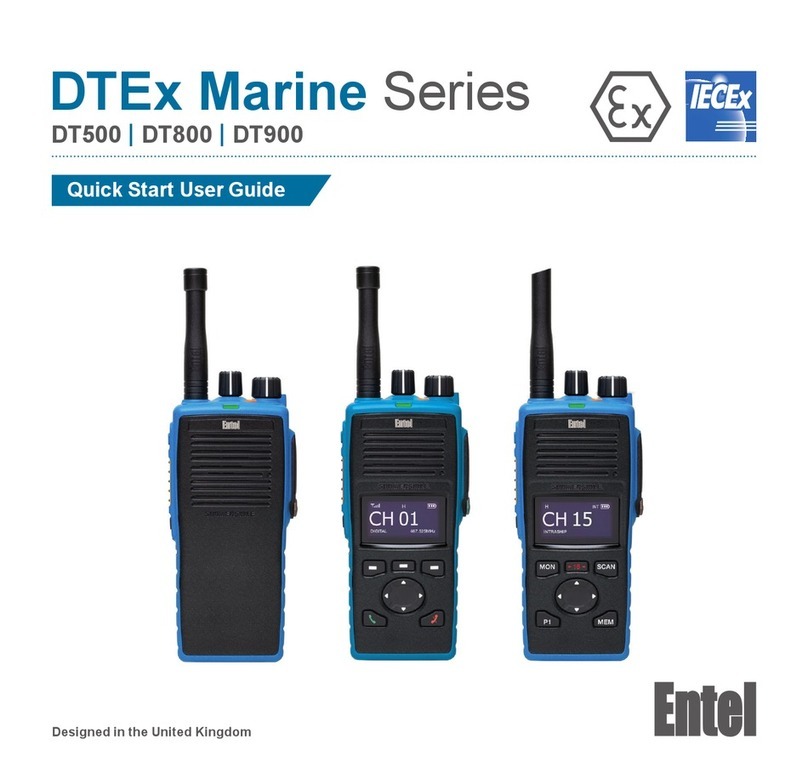
Entel
Entel DTEx Marine Series Setup guide

Entel
Entel DX-IS Land Series Setup guide

Entel
Entel HT446E/L User manual

Entel
Entel DX Marine Series Setup guide

Entel
Entel HT446E Installation instructions
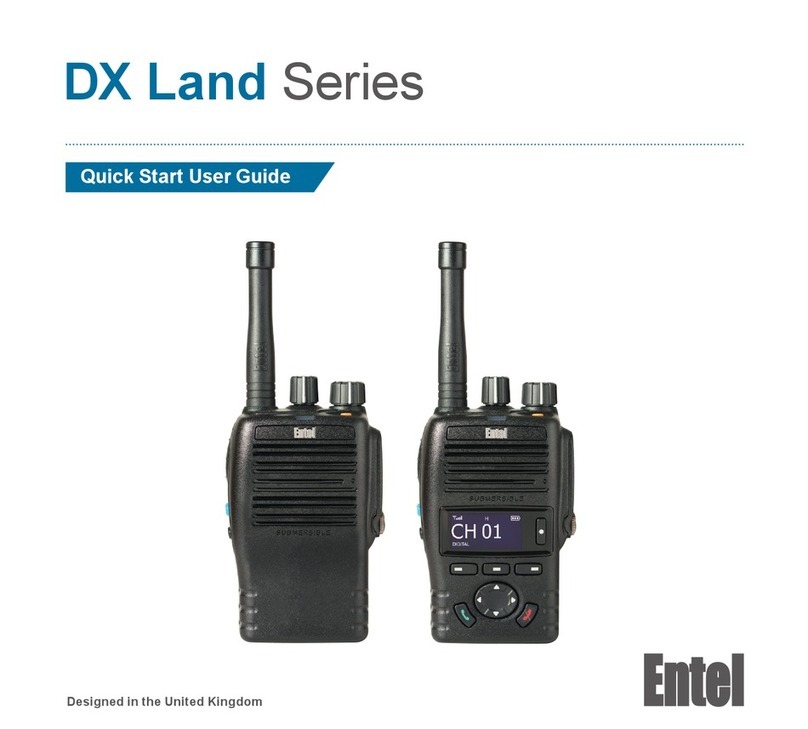
Entel
Entel DX446L Setup guide

Entel
Entel DN495 Setup guide
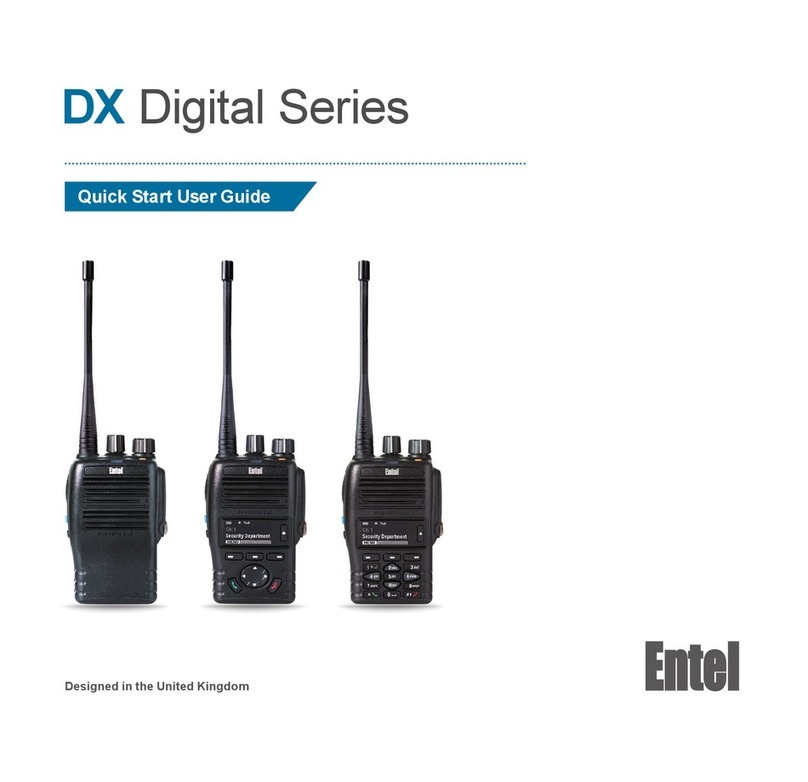
Entel
Entel DX Digital Series Setup guide
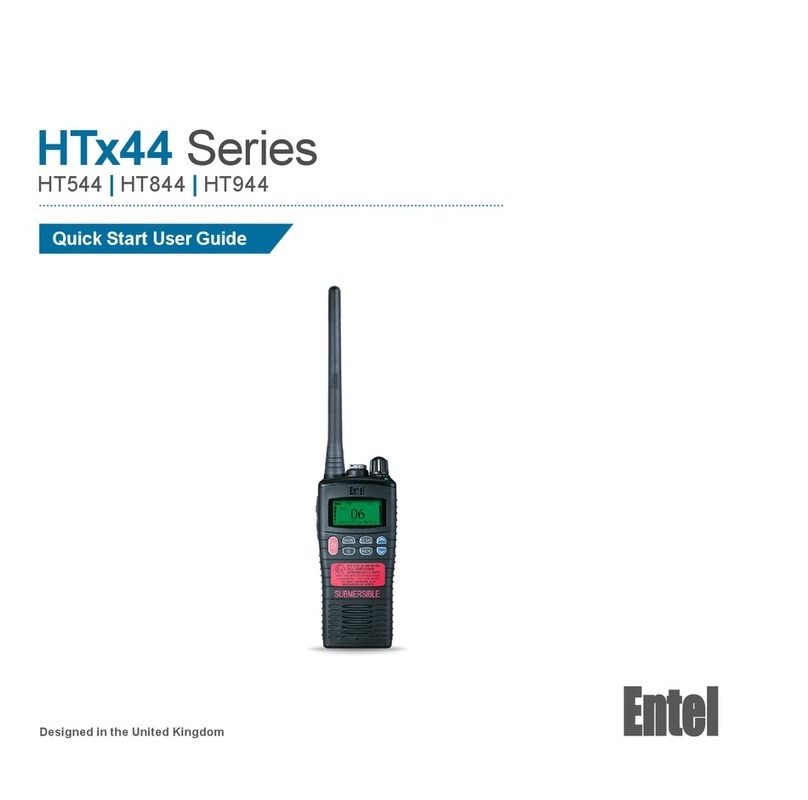
Entel
Entel HT 44 Series Setup guide
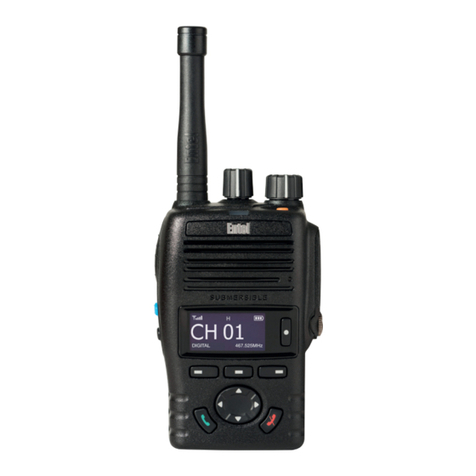
Entel
Entel DX Series User manual

